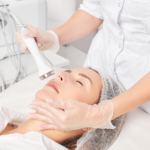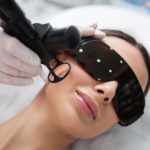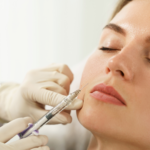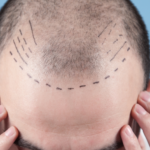Melasma
Melasma, characterized by brown or gray-brown patches on the face, is a prevalent skin condition that often affects individuals, particularly women. While these patches commonly appear on the forehead, cheeks, nose, chin, and upper lip, they can also manifest on sun-exposed areas such as the forearms and neck.
Although melasma typically does not cause physical discomfort, its visible impact on facial appearance can significantly affect an individual’s self-confidence and emotional well-being.
What Triggers Melasma?
The exact cause of melasma remains unclear, but certain factors are known to contribute to its development:
Sun Exposure: Prolonged exposure to ultraviolet (UV) rays from the sun is a primary trigger for melasma. UV radiation stimulates the melanocytes, leading to increased pigment production in the skin, particularly during sun-drenched months.
Hormonal Changes: Fluctuations in hormone levels, such as those occurring during pregnancy or due to the use of hormonal contraceptives, can also provoke melasma in susceptible individuals.
Cosmetic Products: Certain skincare products containing harsh or irritating ingredients may exacerbate melasma, especially when applied to sensitive skin.
Individuals at Risk of Melasma
While melasma affects individuals of all skin types, certain groups are more susceptible:
Dark-Skinned Individuals: Those with darker skin tones have a higher concentration of active melanocytes, increasing their vulnerability to melasma.
Genetic Predisposition: Individuals with a family history of melasma are more likely to develop the condition.
Pregnant Women: Hormonal fluctuations during pregnancy can trigger or worsen melasma, leading to the appearance of dark patches on the skin.
Signs and Symptoms of Melasma
The hallmark sign of melasma is the presence of brown or gray-brown patches on the face, typically localized to the cheeks, forehead, chin, and upper lip.
Preventing Melasma: Tips for Protection
Effective prevention strategies for melasma include:
Sunscreen: Daily application of a broad-spectrum sunscreen with SPF 30 or higher is essential to shield the skin from harmful UV rays.
Gentle Skincare: Opt for gentle skincare products that are free of harsh chemicals or potential irritants to minimize the risk of exacerbating melasma.
Avoidance of Waxing: Refrain from waxing areas affected by melasma, as this can cause inflammation and potentially worsen the condition.
Advanced Melasma Treatments at Oasis
At Oasis, our dedicated team of skincare experts in Delhi provides personalized treatment plans tailored to each patient’s unique needs. Treatment for melasma typically begins with a comprehensive skin assessment to determine the extent of pigmentation and underlying causes.
Our treatment options for melasma may include:
Medications: Topical formulations containing hydroquinone (HQ), corticosteroids, azelaic acid, or kojic acid may be prescribed to lighten pigmented areas and prevent further melanin production.
Procedures: Aesthetic procedures such as chemical peels, microdermabrasion, and dermabrasion may be recommended to enhance skin texture and reduce pigmentation.
Your Experience at Oasis
At Oasis, we prioritize delivering exceptional patient care and achieving optimal treatment outcomes. Our experienced Aesthetic professionals are dedicated to ensuring a comfortable and rewarding experience for every individual seeking melasma treatment. With our advanced therapies and personalized approach, you can trust Oasis to help restore your skin’s natural beauty and confidence. Choose Oasis for trusted melasma treatment and embark on your journey to radiant, flawless skin!





